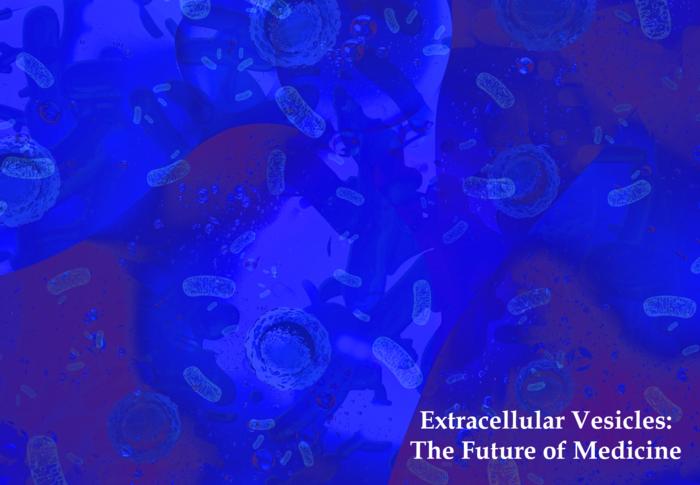The World Mitochondria Society (WMS) and the International Society of Microbiota (ISM) are proud to announce the First World Conference on Targeting Extracellular Vesicles (EVs), scheduled for October 17-18, 2024, at the Corinthia Palace, Malta. This event will explore the latest advancements in extracellular vesicle research and their transformative applications in health and therapeutics, with a special focus on the interactions between EVs, mitochondria, and microbiota.

Credit: Targeting Extracellular Vesicles 2024
The World Mitochondria Society (WMS) and the International Society of Microbiota (ISM) are proud to announce the First World Conference on Targeting Extracellular Vesicles (EVs), scheduled for October 17-18, 2024, at the Corinthia Palace, Malta. This event will explore the latest advancements in extracellular vesicle research and their transformative applications in health and therapeutics, with a special focus on the interactions between EVs, mitochondria, and microbiota.
Extracellular vesicles (EVs) are small, membrane-bound particles released by cells into the extracellular environment. These vesicles play a crucial role in intercellular communication by transferring bioactive molecules such as proteins, lipids, and nucleic acids between cells. EVs include various types, such as exosomes, microvesicles, and apoptotic bodies, each differing in size, biogenesis, and function.
What is the Future Strategy and Applications of Extracellular Vesicles?
EVs are gaining immense traction as a pivotal element in the evolution of next-generation therapeutic strategies. EVs, functioning as fundamental mediators of intercellular communication, exhibit remarkable potential in revolutionizing the treatment paradigms for a myriad of diseases. This conference aims to underscore the strategic importance of EVs, showcasing their capabilities in targeted drug delivery, regenerative medicine, and immune modulation. By integrating EV research with advanced technologies, scientists are on the cusp of developing innovative therapeutic approaches to tackle complex conditions such as neurodegeneration, cancer, and metabolic disorders. The strategic emphasis on EVs promises to enhance the precision and effectiveness of personalized treatments, significantly improving patient outcomes across a broad spectrum of diseases.
The Future Impact of EVs on Health
Extracellular vesicles are poised to revolutionize the field of health and medicine due to their unique properties and versatile applications. Here are some key areas where EVs are expected to make significant impacts:
1. Targeted Drug Delivery: EVs can be engineered to deliver therapeutic agents directly to specific cells or tissues, enhancing the precision and effectiveness of treatments while minimizing side effects. This targeted approach is particularly promising for conditions like cancer, where precision medicine is crucial.
2. Regenerative Medicine: EVs derived from stem cells have shown potential in promoting tissue repair and regeneration. They can be used to treat injuries and degenerative diseases by facilitating the healing process and restoring function to damaged tissues.
3. Immune Modulation: EVs have the ability to modulate immune responses, making them valuable in treating autoimmune diseases, inflammation, and improving the success rates of organ transplants. Their role in immune regulation could lead to breakthroughs in managing chronic inflammatory conditions.
4. Diagnostic Biomarkers: EVs carry unique biomarkers that can be used for early disease detection and monitoring. This capability is driving advancements in personalized medicine, allowing for more accurate diagnoses, timely interventions, and better management of diseases.
5. Innovative Therapeutic Platforms: The development of advanced delivery systems for EVs, enhanced by nanotechnology and multi-omics approaches, is expanding their therapeutic potential. These innovations are making EVs more stable, efficient, and capable of carrying larger therapeutic payloads.
The growing interest from both big pharmaceutical companies and startups highlights the immense commercial potential of EVs. With ongoing research and development, EV-based therapies are expected to become a cornerstone of modern medicine, offering new solutions for complex health challenges and improving patient outcomes across a wide range of diseases.
The conference will feature a comprehensive agenda covering these critical areas and more, providing attendees with a thorough understanding of the current state and future prospects of EV research and applications. Topics will include recent discoveries in the interaction between mitochondria and EVs, the role of EVs in neurodegeneration and brain health, the impact of microbiota-derived EVs on gut-brain communication, and the potential of EVs in cancer therapy and aging interventions.
Following the presentations, an in-depth debate and Q&A session with speakers and scientific committee members will focus on addressing the most significant and impactful issues in the field.
Join us at this groundbreaking event to explore how EVs are set to revolutionize medical science and therapeutic approaches. For more information and to register, visit www.targeting-exosomes.com.



